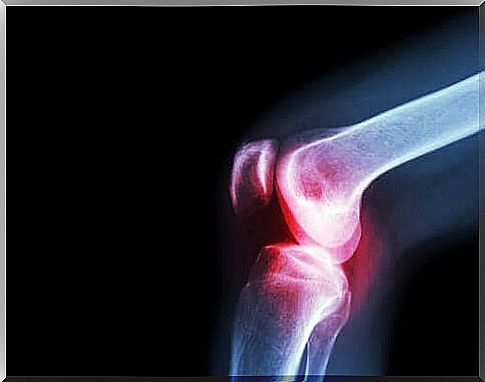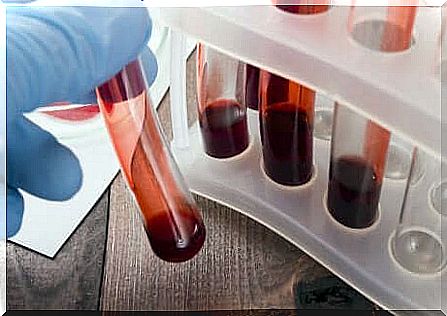Septic Arthritis: Causes, Symptoms And Treatments

Septic arthritis is also called infectious arthritis. It is an inflammatory state caused by an infection that can be bacterial, viral or fungal in nature.
Infections can cause arthritis in both direct and indirect forms. In the first case, the infectious agent is found in the joint. Typically, however, the infection originates in another area of the body and then reaches the joint and travels through the bloodstream.
Septic arthritis can have serious consequences for the joint. We talk about it in this article. Read on!
Causes of septic arthritis
Septic arthritis occurs when pathogenic organisms that cause infection reach the joint. As anticipated, the most common case is that access to the joint occurs through the bloodstream.
It can also happen, however, that the joint is directly affected by the pathogen. This can occur following an injury or surgery. Some situations increase the risk of suffering from septic arthritis :
- Bacterial infection in another area of the body.
- Bacteremia: the presence of bacteria in the blood.
- Joint surgery, for example for implantation of a prosthesis.
- Chronic conditions such as diabetes or rheumatoid arthritis. Medicines taken to treat these diseases can inhibit the immune system, which is why the risk of infection increases.
- Intravenous drug intake.
- Arthroscopies.
- Trauma.
- Skin diseases. Psoriasis and eczema are a risk factor.

Importantly , most cases are caused by bacteria, especially staphylococci and streptococci. The disease can occur at any age, but is more common in infants. The joints most affected are the hip and knee.
Symptoms
Symptoms vary depending on the nature of the infection. Bacterial infections usually affect only one joint. They usually occur in the knee or hip. Any movement made by the affected joint becomes very painful. Symptoms typically present themselves in a short time and are accompanied by fever and chills.
In the case of a viral infection, however, the symptoms appear gradually. It causes generalized joint pain, not limited to just one joint. Finally, fungal infections are much less common and the main symptoms are the following:
- In the case of the newborn, cry when he moves the affected joint. He may also have a fever and be short-tempered.
- Intense joint pain.
- Redness and inflammation.
- Fever.
- Pseudoparalysis.
- Chills.
Diagnosis
It is very important to inform your doctor of your medical history. Furthermore, the professional will have to carry out a complete physical exploration. For example, arthritis caused by gonococcal infection is often accompanied by genital secretions. It is therefore essential to check whether the patient has recently had another infection.

First of all, the patient will need to carry out blood tests. It is also possible to take samples of synovial fluid for microscopic analysis and culture. In this way, it is possible to determine the presence of any infection and possibly identify the bacterium.
In some cases, an x-ray of the affected joint is necessary. X-rays and other imaging tests help make the correct diagnosis.
Treatment of septic arthritis
A joint drain is usually done. If it is a bacterial infection, antibiotic medicines are used. In order to choose the correct antibiotic it is necessary to know which bacterium is responsible for the infection. The antibiotic can be administered orally or intravenously.
The patient’s age and medical history should also be taken into account. In case of viral infection, specific treatments are generally not given.
Finally, rest is recommended to calm the pain; it is also advisable to apply cold packs. As for medicines, it is possible to administer analgesics and anti-inflammatories.
How joint drainage occurs
A needle is used which is inserted into the synovial space by arthroscopy or open operation. In the case of the hip, this technique is more difficult, so surgery is usually used.
In conclusion
Septic arthritis most commonly affects newborns and immunosuppressed people. If the joint is sore or inflamed, you should see your doctor.









